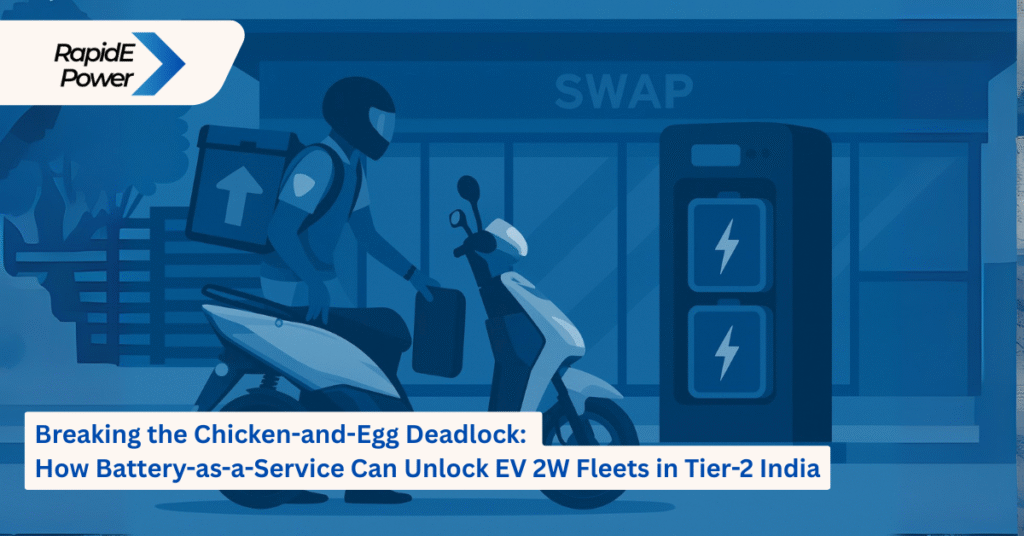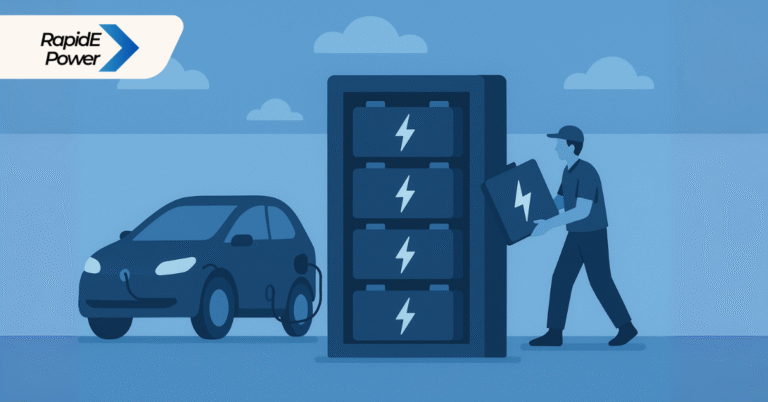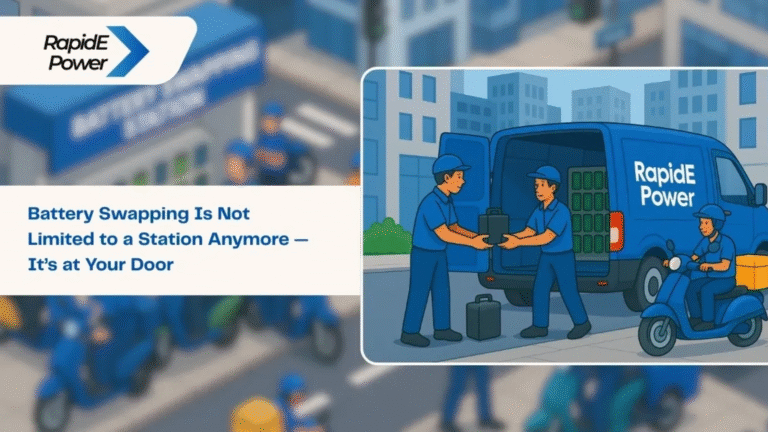
India’s food delivery, e-commerce, and hyperlocal logistics economy thrives on speed and efficiency. Platforms like Zomato, Swiggy, Blinkit, BigBasket, and Zepto are under mounting pressure to cut their carbon emissions while keeping operations affordable. For them, electric 2-wheelers (E2Ws) are the most practical solution. Yet, a critical barrier remains: the lack of battery swapping infrastructure in Tier-2 and sub-Tier-1 cities.
Without reliable swapping stations, EV gig workers can’t complete long shifts. And without fleets on the ground, operators hesitate to invest in swapping infra. It’s the classic chicken-and-egg problem.
The Ground Reality
- India sold over 1.7 million electric 2-wheelers in FY2024-25, with 80% concentrated in metros and Tier-1 cities.
- Tier-2 and Tier-3 cities—home to nearly 500 million Indians—remain underserved because battery swapping is missing.
- Fleet operators want to expand but face downtime challenges. Unlike metros where a rider can swap batteries in under 2 minutes, smaller cities still depend on slow charging—leading to loss of orders and reduced earnings for gig workers.
Why Swapping Matters for Fleets
For delivery-driven fleets, time is money. A rider doing 30–35 deliveries a day can’t afford to stop for 3 hours to charge. Swapping ensures:
- Zero downtime: 2-minute swaps vs. 2–3 hours of charging.
- Higher earnings for gig workers: more deliveries = better incentives.
- Predictable operations for platforms: no risk of failed orders due to dead batteries.
- Scalability: plug-and-play for new markets without massive grid upgrades.
The Market Catch-22
- Swapping companies need assurance of demand before setting up infra.
- Fleets need assurance of infra before sending riders into new cities.
This loop keeps Tier-2 and sub-Tier-1 cities locked out of the EV ecosystem, even though demand for hyperlocal delivery is booming there.
RapidE Power’s Approach
At RapidE Power, we believe this deadlock can be broken only with a fleet-first, asset-light model. Our Battery-as-a-Service (BaaS) solution puts gig workers and delivery fleets at the center:
- On-Demand Battery Delivery: Riders don’t need to find a station—we deliver a fully charged battery wherever they are, reducing downtime to minutes.
- Micro-Swapping Hubs: Instead of large infra-heavy stations, we deploy compact hubs in strategic locations—markets, bus stands, near dark kitchens—where delivery demand is highest.
- Pay-Per-Swap Economics: Fleets don’t buy batteries. They just pay per swap, removing the upfront cost burden and improving cash flow.
- Tier-2 Readiness: Our model doesn’t wait for 1000+ riders to justify infra. We can start lean in a city with 50–100 riders and scale as demand grows.
Why This Matters Now
India’s 2030 EV targets require 30% of all new vehicle sales to be electric. For 2-wheelers, that’s nearly 20 million EVs in the next 5 years. This shift cannot remain metro-centric. If Tier-2 and Tier-3 cities don’t get swapping infra soon, the adoption curve will stall.
Companies like Zomato and Blinkit have already pledged to electrify their fleets. But without innovative swapping solutions, these commitments will be restricted to the NCR, Mumbai, Bangalore, and Chennai.
The Way Forward
Battery swapping is not just infra—it’s an ecosystem play. It needs:
- Collaboration with delivery platforms to aggregate rider demand.
- Policy support for faster approvals and subsidies in Tier-2 cities.
- Investor confidence to back scalable models like Battery-as-a-Service.
At RapidE Power, we are building exactly this bridge. By enabling gig workers to earn more and fleets to expand faster, we’re solving the chicken-and-egg dilemma—one battery at a time.



